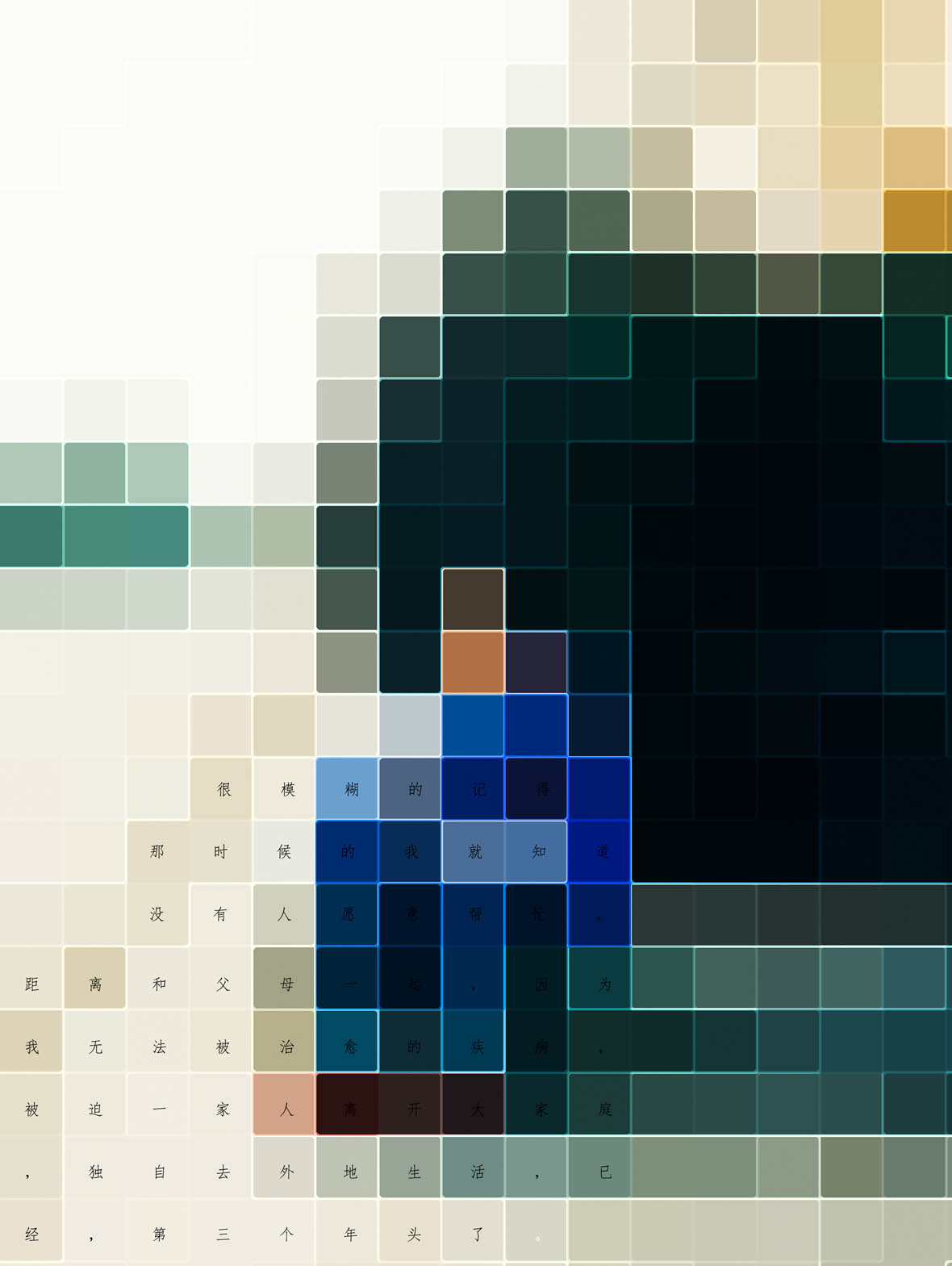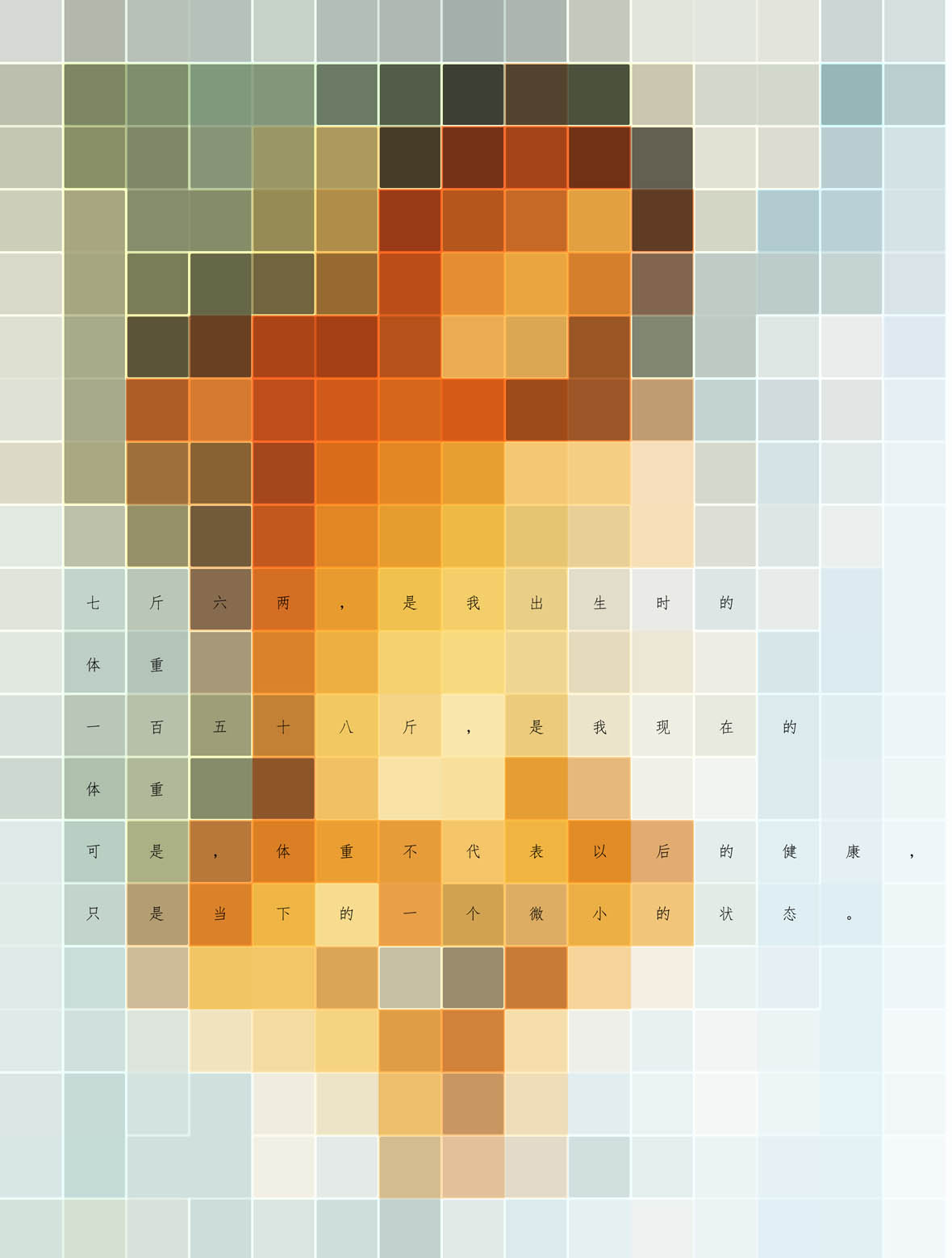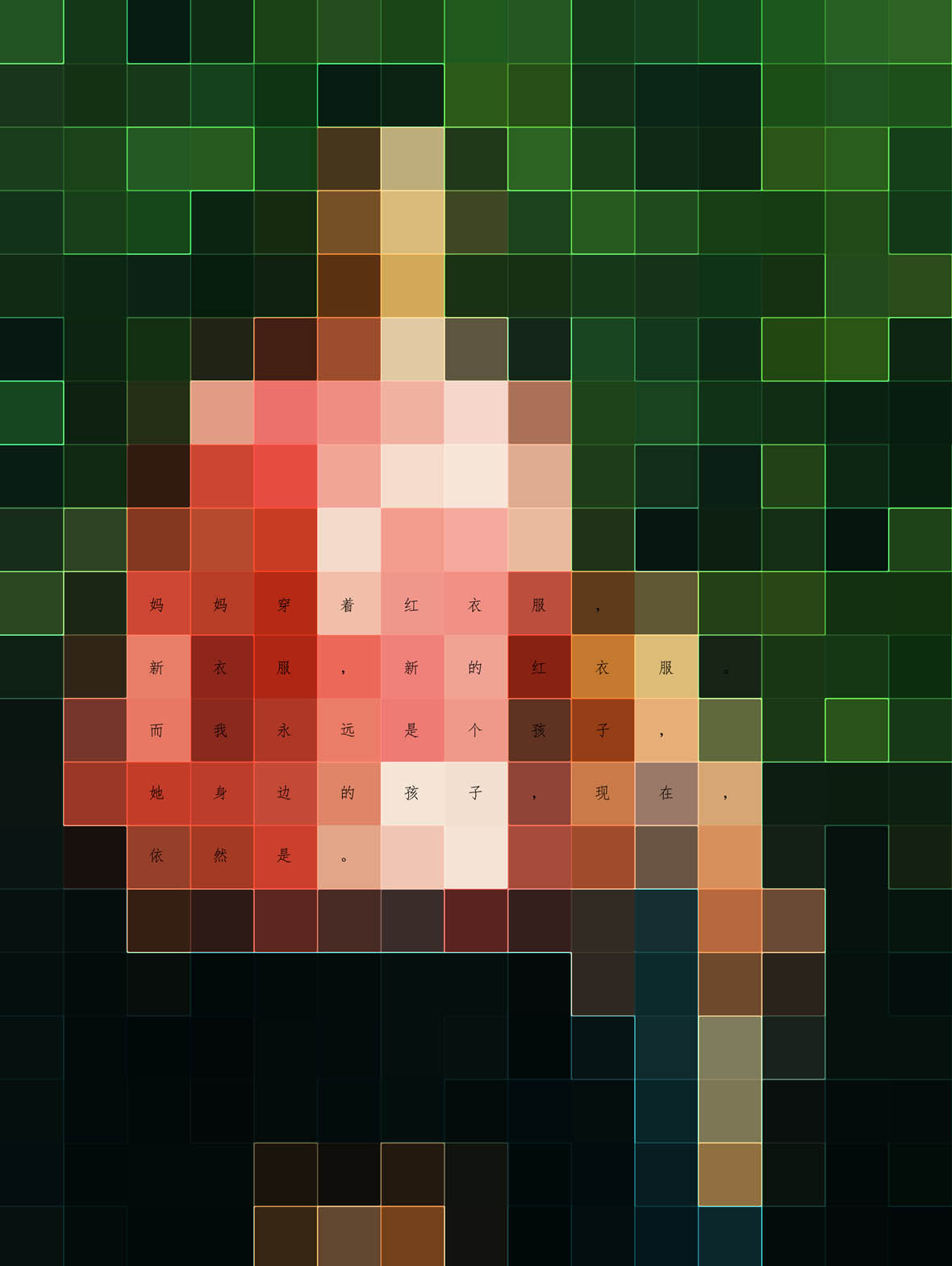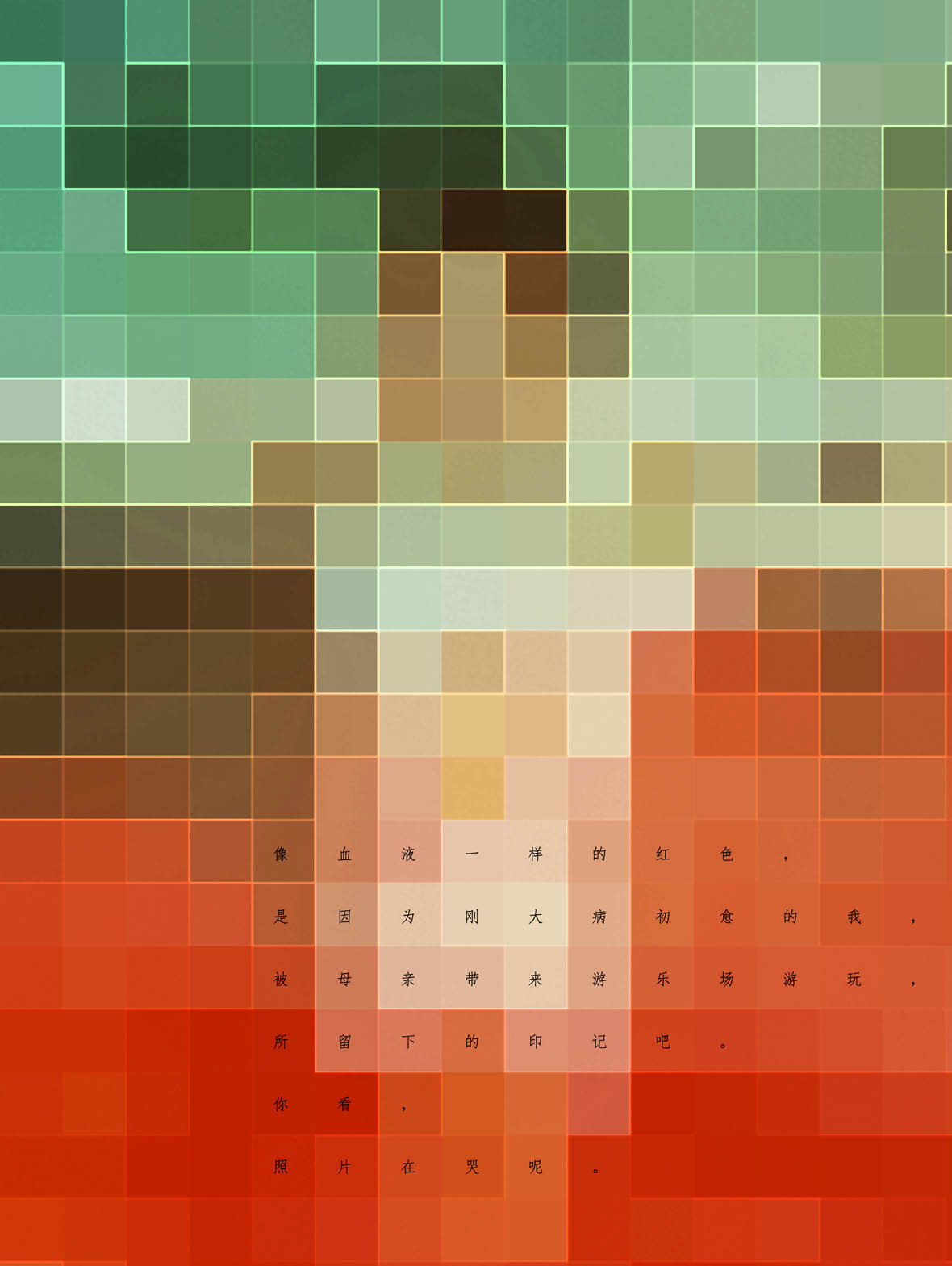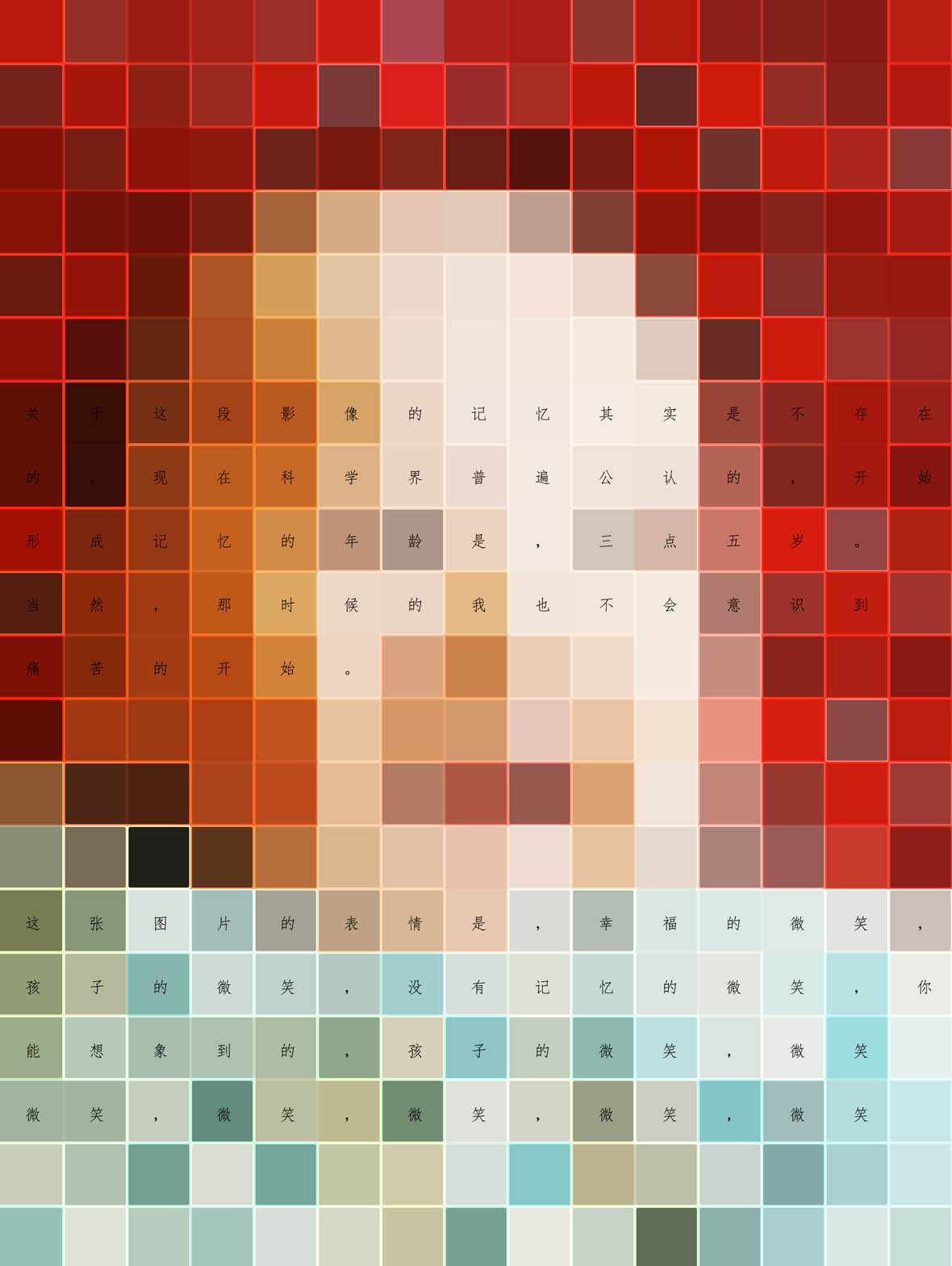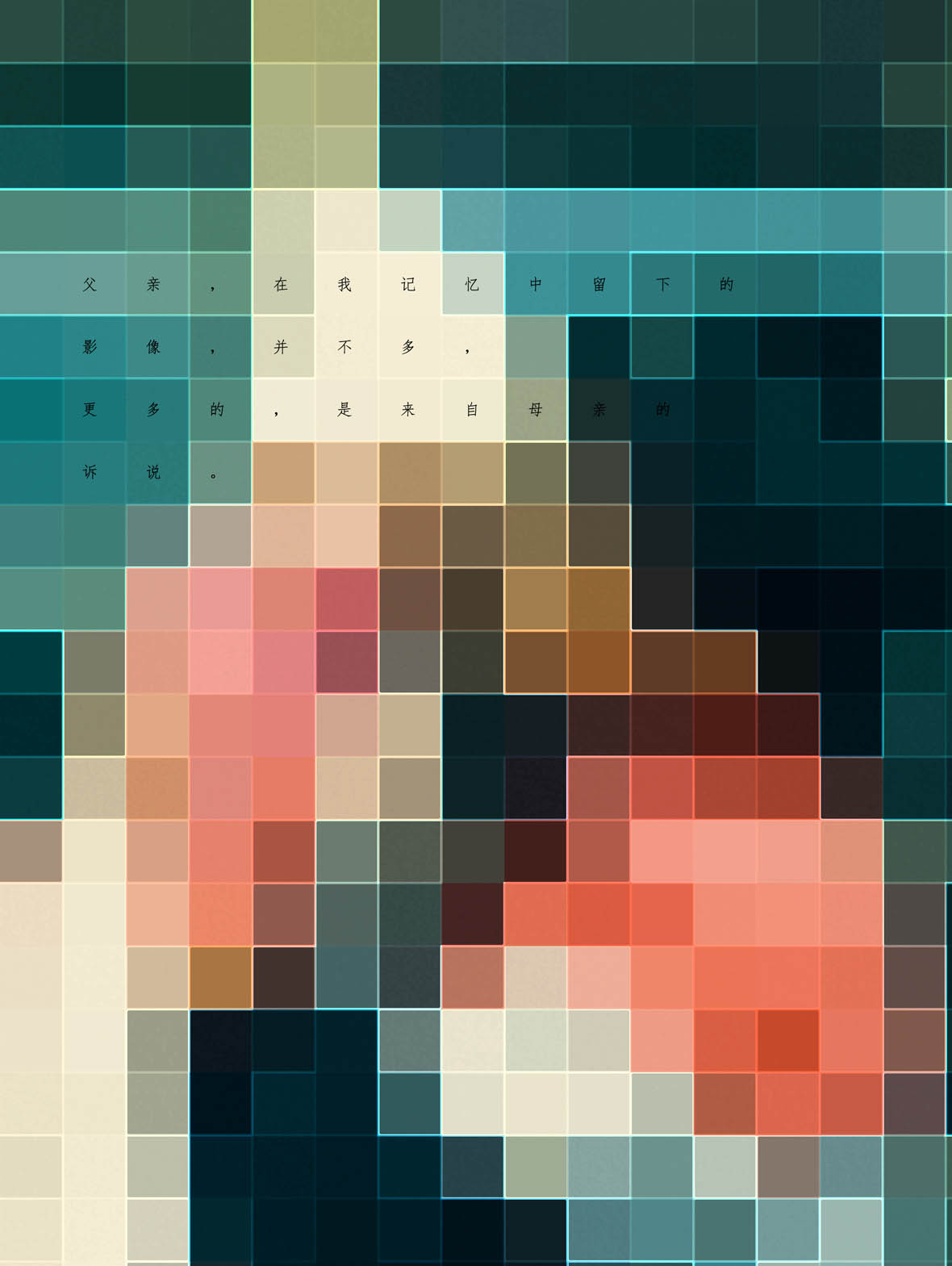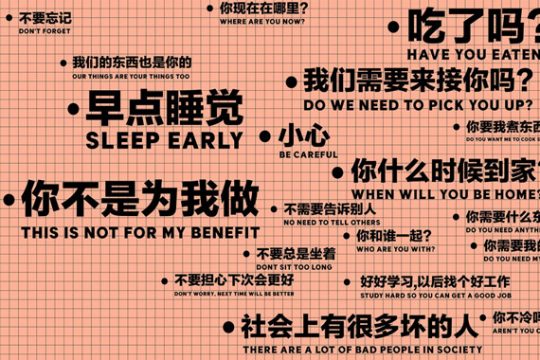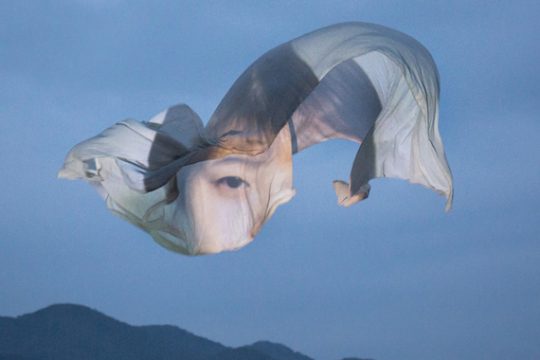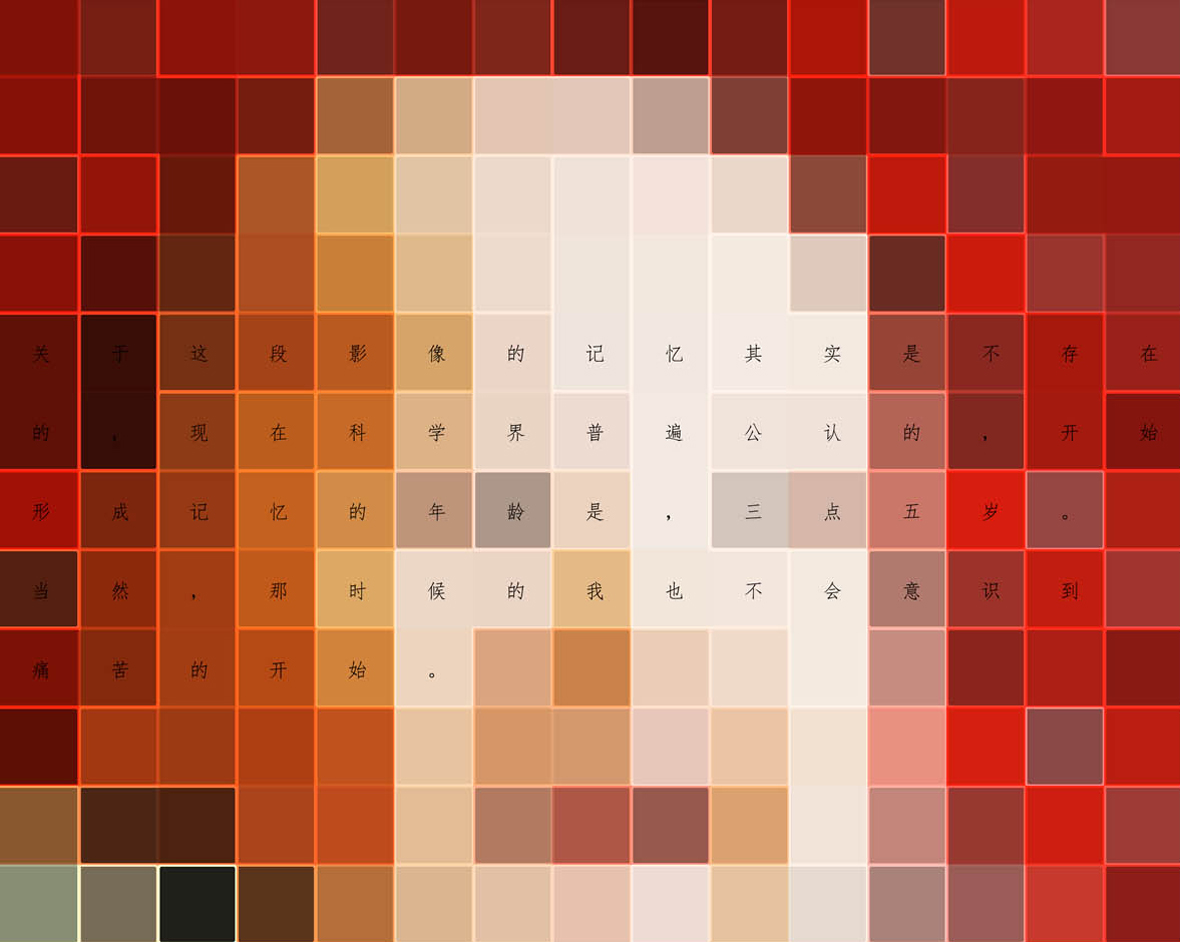
Chinese photographer River Zhang says he likes being alone. Having studied in four universities between China and the UK, Zhang’s daily routine consists of getting up on time, making breakfast, eating it, and either attending class or creating art. He says that “this state of loneliness” is something he values, as it introduced him to thoughts about loneliness and thereafter his photographic works on the subject of loneliness.
摄影师张沛之说自己是不喜欢从众的人。在中国大陆和英国四所大学接受过摄影教育的他,每天生活规律,早上定时起床,做早餐、吃早餐,然后上课或创作。他说自己很享受“孤独的状态”,也是这种仪式般的孤独带给他对“孤独”的思考,而创作了一系列关于孤独的作品。
Zhang, who graduated from the University of Creative Art in the UK earlier this year, created the photography series Dialogue with Memory as his graduation project. The series explores his loneliness of being an only child. To complete the project, Zhang’s father helped him scan over 400 photos from their family albums. Zhang says, “Among those photos, some I can remember vividly, others I have no memory of at all. I believe all these memories are from my confusion as an only child. So I ended up working with the photos that I remember the most.”
今年刚从英国创意艺术大学毕业的张沛之创作了名为《与记忆的对话》的毕业作品。该作品在年度毕业生大展伦敦“无围栏”毕业作品展展出,讨论了自己作为独生子的孤独感。张沛之的父亲帮他扫描了400多张家庭相簿里面的照片。张沛之说:“这些照片中,有的会让我有非常强烈的记忆,有些则完全记不起来,我相信那些记忆都是来自于‘独生子女孤独的困惑’,于是我筛选了有强烈记忆的作品进行二次创作。”
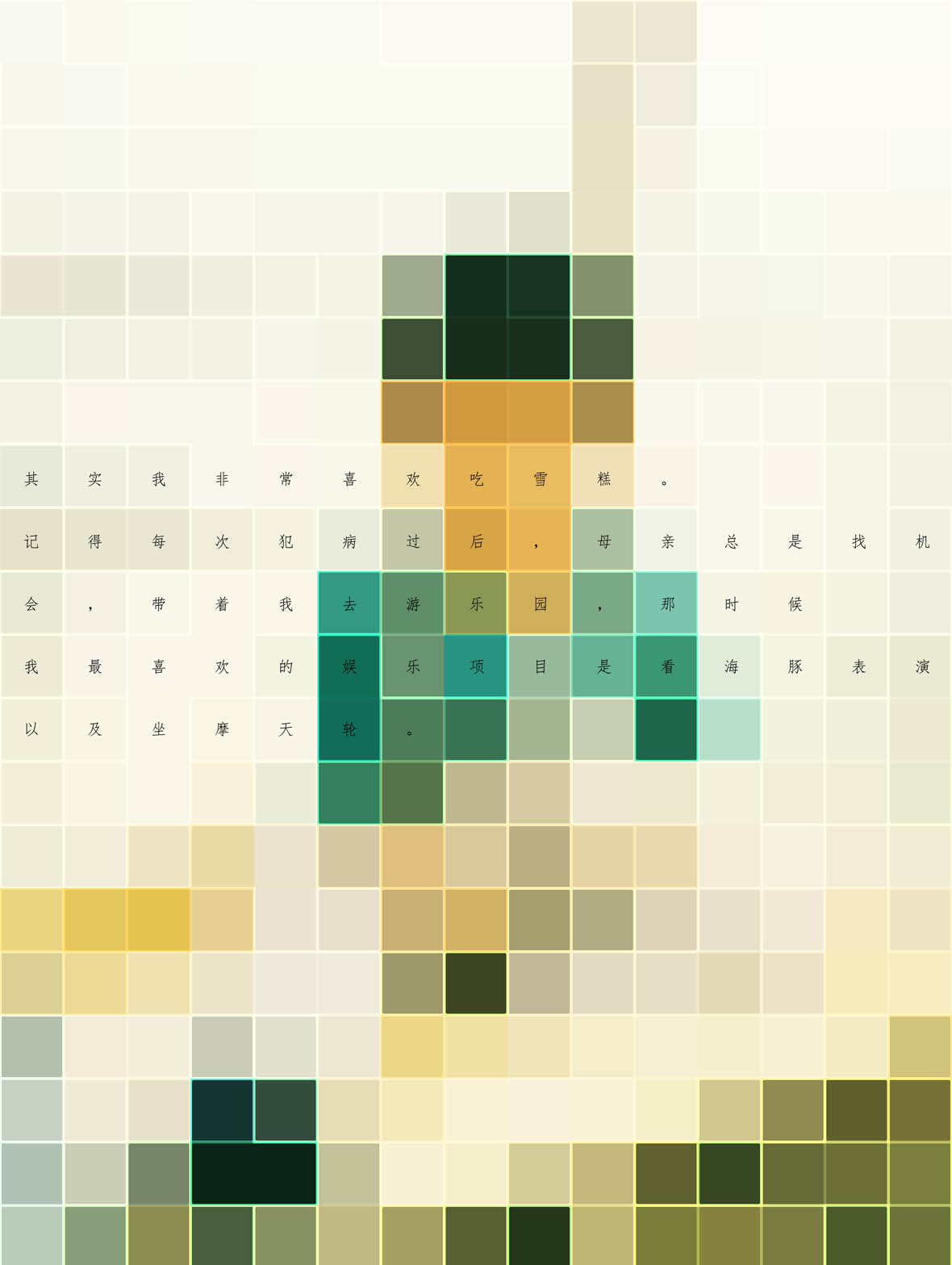
To create the series, Zhang selected the photos that he liked the most, pixelated them, and printed them out. From afar, viewers can make out the content of the image. However, viewing at a closer distance, the colored photos turn into abstract collages of colorful blocks. In order to give context to the contents of each photo, Zhang filled certain squares with Chinese text, each standing alone in the middle of certain blocks. Zhang intentionally used photos that might outwardly show harmony and happiness, but to him, they represent painful memories – this contrast is invisible to the viewer, and that is why he used mosaics to conceal the superficial harmony and happiness. The blocks also represent another aspect of his childhood, which is that they’re similar to the paper he worked with for writing practice around the time when these photos were taken. Zhang’s carefully composed text not only serves as a form of self-expression but as a form of catharsis. These works were created in the context of China’s family planning policy and ideas of Confucianism, topics that, to him, have direct connections to the notion of loneliness.
张沛之从童年的照片里选出最合心意的照片,将他们像素化并印制出来。在远处,观者可以恍然辨认相片的内容,而凑近之后,色彩斑斓的战片变成印着汉字的方框,却辨别不出照片的内容。为了解释图片内容,张沛之以书法练习方格的模样在马赛克上写上了汉字,这些字比起方格来要小许多。对张沛之来说,这些文字才是照片的真正意义。张沛之选择了表面看起来欢乐和谐,但是背后却隐含痛苦回忆的照片,而这种强烈的反差使得外人完全看不到。所以,他选择用马赛克来掩盖表面的欢乐和谐,而马赛克又正好和他小时候练字的田字格有着非常多的相似点,照片上他的年纪也正是学写字的年纪。张沛之写下这些表达内心的文字,并把自己的作品作为“一种自我救赎的方式”。张沛之在创作初期就把这组作品放在“计划生育”以及“儒家思想”的大背景下去考虑,这两个背景有着非常充分的关联:孤独。
Zhang says: “In Confucianism, which has existed in Chinese society for 2500 years, loneliness isn’t something to be openly discussed. The five cardinal relationships in Confucianism tell us that everyone has close relations to those around them, so those who feel lonely are thought of as being incomplete humans. However, under the family planning policy in the past, it feels impossible – every family only has one child, which is a lonely thing, but we cannot talk about it.”
张沛之说:“在束缚了中国2500多年的儒家文化中,是不允许讨论孤独的存在的。儒家文化中的五伦,都是在讨论每个生命与周边生命的关系,感受到孤独的人,在五伦的关系中,是不完整的,不能被称作完整的人。但是在之前有计划生育的大背景下,这就显得格格不入,明明一家就一个孩子,明明就是一个个孤独的个体的存在,却无法被讨论。”

